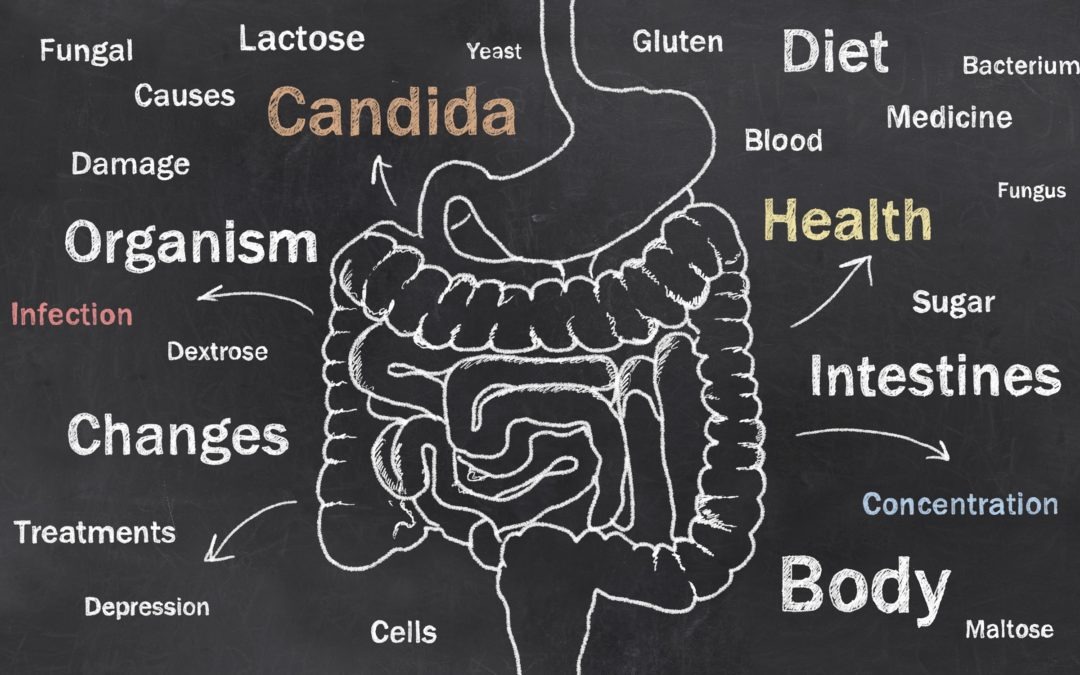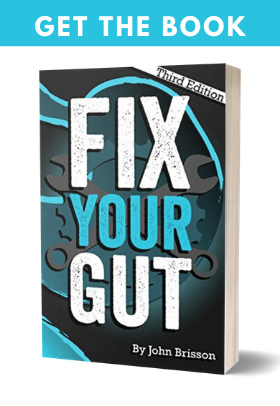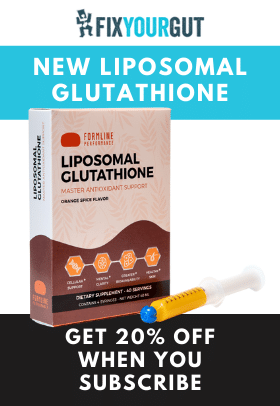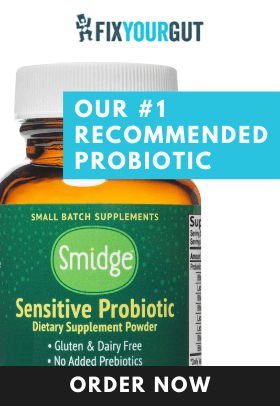Updated 2022
Candida Dysbiosis, Are You Suffering from It?
All About Candida Dysbiosis
Candida is a genus of yeasts found within most humans’ intestinal and vaginal flora and is generally considered commensal unless overgrown. Candida can become opportunistic and cause numerous, if not severe, health issues. One of the leading causes of developing opportunistic Candida dysbiosis is frequent or extended antibiotic usage. Frequent or extended antibiotic usage reduces colonies of probiotic bacteria that usually keep Candida from overgrowing and becoming dysbiotic flora. Using long-term steroid medications and hormonal birth control hinders the functionality of your immune system and you may cause Candida dysbiosis. Candida infections are frequently seen in people with severely compromised immune systems. For example, people struggling with intravenous drug addiction or people with systemic lupus. Candida dysbiosis can also develop if you have cancer and/or are receiving conventional cancer treatments, including radiation or chemotherapy, which hinders the functionality of your immune system. Finally, taking proton pump inhibitors and other acid reducing medications for even a few weeks can lead to upper gut Candida dysbiosis as well.
Long-term physical and/or mental stress also interferes with your immune system health and can lead to you developing yeast dysbiosis. Suffering from uncontrolled diabetes can cause or worsen yeast dysbiosis by hindering the functionality of your immune system. Rarely, Candida dysbiosis can be passed from sexual intercourse if the person you are having sex with is suffering from Candida-infected sexual organs (for example, having unprotected vaginal sex with a woman suffering from a Candida caused vaginal yeast infection).
Though H. Pylori is one of the leading microbial causes of gastritis, if Candida dysbiosis occurs within our stomach, gastritis can also be a symptom. When opportunistic Candida starts to flourish within our digestive tract, it will begin to cause digestive issues. If you are suffering from stomach Candida dysbiosis, many of your symptoms will be similar to H. pylori dysbiosis. Gastroesophageal reflux disease (GERD), silent reflux, dyspepsia, dysphagia, stomach bloating, gastritis, ulcers, frequent belching, reduced stomach acid production, and/or rarely stomach cancer (caused by severe long-term dysbiosis) occurs with upper gut Candida dysbiosis. Candida dysbiosis of our oral cavity causes a condition known as thrush. Symptoms of thrush include visible creamy white raised lesions that look like cottage cheese seen throughout the oral cavity (chief symptom), oral cavity pain, oral cavity itching, oral cavity bleeding, oral cavity dryness, cracking/redness within the corners of your mouth, oral cavity burning, burning mouth syndrome, and/or loss of taste. Candida dysbiosis within the small intestine causes small intestinal yeast overgrowth symptoms. Candida dysbiosis has also been seen as a possible secondary cause for people suffering from inflammatory bowel disease. Candida dysbiosis is also a cause and can worsen increased gut permeability, also known as leaky gut. Candida dysbiosis can also cause auto-brewery syndrome, where people become intoxicated from carbohydrate ingestion from excessive Candida alcohol production within their digestive tract. Candida is also able to produce biofilm which can make it more difficult to relieve Candida dysbiosis unless the biofilm is dissolved. Finally, Candida dysbiosis can occur within our large intestine and anal area, causing excessive flatulence, large intestinal pain, proctitis, rectal itching and/or rarely colon/rectal cancer.
Many people suffering from gastrointestinal Candida dysbiosis also suffer from systemic yeast dysbiosis and vice versa. What are some of the non digestive yeast dysbiosis symptoms and/or conditions?
Non Digestive System Yeast Dysbiosis Symptoms and/or Conditions
- Alcohol ingestion intolerance (become intoxicated or drunk easier when consuming alcohol)
- Anxiety
- Athlete’s foot
- Brain fog
- Dandruff
- Depression
- Facial flushing
- Histamine intolerance, multiple chemical sensitivity, or mast cell activation disorder (Candida does not produce histamine but it can destabilize mast cells and increase Th2 cell differentiation and worsen increased histamine symptoms)
- Jock itch (severe crotch and/or penal itching, small red fluid-filled blisters, and discharge)
- Ringworm (itchy circular rash with clearer skin within the rash)
- Seborrheic dermatitis
- Strong carbohydrate cravings (sweet foods)
- Tinea versicolor (tan, brown, salmon, pink, or white scaling patches found primarily on your trunk, neck, abdomen, and occasionally face that do not tan when exposed to the sun)
- Vaginal discharge that is abnormal, smells yeasty (like beer)
- Vaginal itching
- Vaginal pain (especially during vaginal intercourse)
- Valley Fever
- Yellowing nails or white spots that grow within nails
What tests might be beneficial to determine if you are suffering from Candida dysbiosis? Candida spit tests you have read about online that can supposedly help diagnose Candida dysbiosis are inaccurate. An alcohol-fasting challenge test might be useful in diagnosing yeast dysbiosis. During an alcohol-fasting challenge test, sugar is consumed, and a few hours later, alcohol and acetaldehyde blood levels are measured to determine Candida intestinal dysbiosis. Yeast converts sugar into alcohol and acetaldehyde as a source of energy during digestion. Testing D-arabinitol in a urine culture may also be an accurate diagnostic marker of yeast dysbiosis. Finally, stool Candida tests, including Genova GI Effects or a Diagnostic Solutions GI Map test, might also be valid in determining gastrointestinal Candida dysbiosis.
Candida Dysbiosis, What to Do About It
Supplement/Lifestyle Recommendations to Help Detox From Yeast Die Off Mycotoxins:
- Formline Performance liposomal glutathione – follow box supplementation recommendations. Do not use if you have silver fillings (mercury amalgams) in your mouth or suffer from mercury toxicity.
- MoZyme Forte – one capsule daily with breakfast, daily.
- Sodium ascorbate – take one thousand milligrams, two to three times daily in divided doses.
- Upgraded™ activated charcoal – follow supplement bottle recommendations.
- Zinc carnosine – two capsules with breakfast and two with dinner, daily.
Molybdenum is used by our body to produce two enzymes, aldehyde dehydrogenase, and aldehyde-oxidase. These enzymes allow the liver to neutralize a potent and otherwise relatively inert toxin (neurotoxin), aldehyde. Yeasts release aldehydes as a byproduct of their cellular respiration, causing the main side effects from yeast die off including brain fog.
Vitamin C is a natural antihistamine and relieves inflammation.
Activated charcoal helps absorb mycotoxins released from yeast die off.
Glutathione storage within your body is reduced when you are suffering from yeast dysbiosis. Glutathione is one of your body’s master antioxidants and is important for reducing cellular oxidative stress within your body and detoxification.
Maintenance Candida Treatment Protocol
- Organic extra virgin coconut oil – two tablespoons total daily in divided doses with meals. Do not use if you are suffering from histamine intolerance or mast cell activation disorder.
- Follow the Bulletproof diet.
Mild Candida Protocol – Taken for One to Two Weeks
- Organic extra virgin coconut oil – two tablespoons total daily in divided doses with meals. Do not use if you are suffering from histamine intolerance or mast cell activation disorder.
- Jarrow Formulas Lactobacillus plantarium – take one capsule nightly one hour before bed with half a cup of filtered water, daily.
- Pure Encapsulations Caprylic Acid – one capsule with breakfast and one capsule with dinner, daily.
- Follow the Bulletproof Diet.
- Stay hydrated.
Coconut oil contains a lot of anti-yeast goodies like capyrlic acid and lauric acid. Both caprylic acid and lauric acid are found in breast milk which is one of the reasons you can still breast feed if you have a yeast infection and why breast milk cures thrush!
S. boulardii is a type of yeast found on lychee fruit that will compete with Candida and reduce its colonies.
Lactobacilus plantarium is mainly found in fermented foods and has anti-yeast capabilities.
Moderate Candida Protocol – Taken Two – Three Weeks
- Organic extra virgin coconut oil – two tablespoons total daily in divided doses with meals. Do not use if you are suffering from histamine intolerance or mast cell activation disorder.
- Jarrow Formulas Niacinamide – five hundred milligrams daily with breakfast. daily.
- Jarrow Formulas Sacharomyces Boulardii AND Jarrow Formulas Lactobacillus Plantarium – take one capsule nightly of each one hour before bed with half a cup of filtered water, daily.
- Lauricidin – swallow one fourth of a teaspoon of mini-pellets with filtered water, two times daily after meals. Can increase to one teaspoon, two times daily after meals if needed.
- Pure Encapsulations Caprylic Acid – two capsules with breakfast and two capsules with dinner. daily.
- Gaia Herbs Echinacea Supreme – one capsule with breakfast and one capsule with dinner, daily.
- Kolorex – one capsule daily with breakfast, daily.
- Follow the Bulletproof Diet.
- Stay hydrated.
Niacinamide has anti-yeast capabilities.
Echinacea has been shown in clinical studies to inhibit yeast.
Lauricidin is just a concentrated supplement of lauric acid which as been shown to have anti-yeast capabilities.
Advanced Candida Protocol – Taken for One Month
- Jarrow Formulas Sacharomyces Boulardii AND Jarrow Formulas Lactobacillus Plantarium – take one capsule nightly of each one hour before bed with half a cup of filtered water, daily.
- Jarrow Formulas Niacinamide – one thousand milligrams daily.
- Lauricidin – swallow one fourth of a teaspoon of mini-pellets with filtered water, two times daily after meals. Can increase to one teaspoon, three times daily after meals if needed.
- MegaMycoBalance – three softgels for lunch and three for dinner, daily.
- Kolorex – one capsule for breakfast and one capsule with dinner daily.
- Candex – two capsules in between breakfast and lunch and two capsules in between lunch and dinner on an empty stomach daily.
- Follow the Bulletproof Diet.
- Stay hydrated.
Undecylenic acid has been shown to stop the growth of yeast colonies.
Bee propolis extract has anti-yeast capabilities and is able to dissolve yeast biofilm.
Candex contains enzymes that dissolve the cell walls and biofilm of yeast.
Herbal Candida Protocol – Take for Two Weeks, No More Than One Month
- Gaia Herbs Echinacea Supreme – one capsule with breakfast and one capsule with dinner, daily.
- Thorne Research olive leaf extract – one capsule with breakfast and one capsule with dinner, daily.
- Kolorex – one capsule for breakfast and one capsule with dinner, daily.
- Now black walnut hulls – One capsule with breakfast, and one with dinner, daily.
Olive leaf extract contains oluroperin which is known to stimulate the immune system and has anti-fungal capabilities.
Black walnut contains juglone that has anti-fungal capabilities.
Remember to rebuild your gut for two weeks after all symptoms have subsided or treatment has stopped, whatever comes first. Follow the gut rebuilding protocols in the SIBO protocol.
See more from this series:
- SIBO/Heartburn: Thousands Relieved Who Never Thought They Would Be
- GERD Protocol Two: Resolution of Upper Gut (H. pylori) Dysbiosis/Repairing Ulcers
- GERD Protocols Three – Six: Diet Modification, Clothing, and Posture
- GERD Protocols Seven – Eight: Strengthen LES, and Digestive Enzymes
- GERD Protocol Nine: Candida
- GERD Protocols Ten – Eleven: Constipation Relief and Salt!
- GERD Protocols Twelve – Thirteen: Hiatal Hernias and Squatting!
- GERD Protocol Fourteen: Parasites







Thank you John for sharing all this knowledge. I have been diagnosed with candidiasis and after not being helped properly by multiple doctors, I will try one of these protocols. One question: jarrow bowel support (with lactobacillus prantarum 299v) is out of stock everywhere, so I was wondering if you have any experiences with Swansons plantarum supplement: https://www.swansonvitamins.com/swanson-probiotics-l-plantarum-inner-bowel-support-30-veg-drcaps
It does not say which strain it is, but people seem content with the effects.
Anyhow, if your protocol works, I owe you one after years of struggle.
The stain you should use is specifically L. plantarum 299V.
All right. Thanks for replying.
What would you recommend for treating sibo/siyo in a Child? Doctors are zero help. We get the sibo under control and the yeast flares, and vice versa :(
I think on your basic solution, taking 3000 mg 3 times daily is just way too insane. That means 9000 mg of vitamin C, of which the amount of sodium in it would have hit 900mg+
Where did you get the idea that it is acceptable?
I wonder why you didn’t recommend calcium ascorbate instead.
https://fixyourgut.com/salt-why-everyone-says-you-are-getting-to-much-why-they-are-wrong-and-how-a-lack-of-it-can-greatly-impact-your-health/ / Because too much calcium for the body is not ideal, most people are deficient in magnesium and calcification of arteries is rampant.
What do you think about this product? http://www.canxida.com/